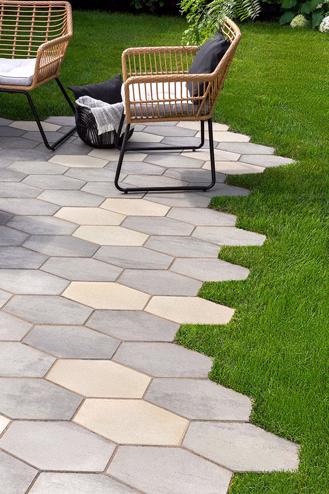
Patio Slabs: A Comprehensive Guide to Materials, Installation, and Maintenance
Introduction
Patios are an integral part of outdoor living spaces, providing a comfortable and inviting area for relaxation, entertainment, and dining. Patio slabs, the foundation of any patio, play a crucial role in defining its aesthetics, durability, and functionality. This comprehensive guide will delve into the various materials, installation techniques, and maintenance practices associated with patio slabs, empowering homeowners and contractors alike to make informed decisions and create stunning outdoor oases.
Materials for Patio Slabs
The choice of material for patio slabs is paramount, as it directly influences the appearance, longevity, and maintenance requirements of the patio. Here are the most common materials used for patio slabs:
- Concrete: Concrete slabs are a popular choice due to their affordability, versatility, and durability. They can be molded into various shapes, sizes, and textures, allowing for customization to suit any design aesthetic.
- Natural Stone: Natural stone slabs, such as granite, limestone, and sandstone, exude elegance and timeless beauty. They offer exceptional durability and resistance to wear and tear, making them a premium option.
- Brick: Brick slabs create a classic and charming look. They are available in a wide range of colors and textures, providing flexibility in design. Brick slabs are known for their durability and low maintenance requirements.
- Pavers: Pavers are individual units made from concrete, clay, or natural stone. They are available in various shapes, sizes, and colors, allowing for intricate patterns and designs. Pavers offer versatility and ease of repair, as individual units can be replaced if damaged.
- Porcelain: Porcelain slabs are a relatively new material for patios. They offer exceptional durability, resistance to fading and stains, and a wide range of design options. Porcelain slabs are also easy to clean and maintain.
Installation of Patio Slabs
Proper installation is essential for the longevity and functionality of a patio. The following steps outline the general process for installing patio slabs:
- Site Preparation: Clear the area where the patio will be installed, removing any existing vegetation or debris. Excavate the soil to a depth of 6-8 inches, creating a level and compacted base.
- Laying the Base: Install a layer of crushed gravel or crushed stone over the excavated area. Compact the base thoroughly using a plate compactor or hand tamper.
- Setting the Slabs: Begin laying the patio slabs on the prepared base, ensuring they are level and aligned. Use a rubber mallet or a level to adjust the slabs as needed.
- Spacing and Joints: Leave a small gap (1/4 to 1/2 inch) between the slabs to allow for expansion and contraction. Fill the joints with sand or polymeric sand to stabilize the slabs and prevent weed growth.
- Edging: Install edging around the perimeter of the patio to retain the slabs and prevent them from shifting. Edging materials can include concrete, metal, or plastic.
Maintenance of Patio Slabs
Regular maintenance is crucial to preserving the beauty and functionality of patio slabs. Here are some essential maintenance practices:
- Cleaning: Clean patio slabs regularly using a mild detergent and a soft brush. Avoid using harsh chemicals or abrasive cleaners, as they can damage the surface.
- Sealing: Seal patio slabs periodically (every 2-3 years) to protect them from stains, moisture, and UV damage. Use a penetrating sealer that does not alter the appearance of the slabs.
- Weed Control: Prevent weeds from growing between the slabs by applying a pre-emergent herbicide or by manually removing weeds as they appear.
- Repair: If a patio slab becomes cracked or damaged, repair it promptly to prevent further damage. Small cracks can be filled with a concrete repair compound, while larger cracks may require professional repair.
Conclusion
Patio slabs are a fundamental element of any outdoor living space, offering both aesthetic appeal and functionality. By understanding the different materials available, following proper installation techniques, and adhering to regular maintenance practices, homeowners can create stunning and durable patios that will enhance their outdoor enjoyment for years to come. Whether you prefer the timeless elegance of natural stone, the versatility of concrete, or the intricate designs of pavers, there is a patio slab option to suit every taste and budget.